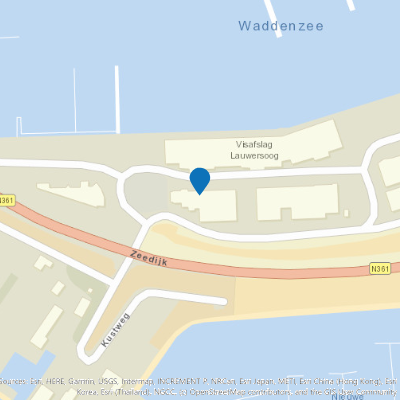All activities in Northeast Friesland
505 to 528 of 851 results
-
Dorpslogies Adema
Dorpslogies Adema Earnewald
Earnewald -
Sint-Antoniuskerk Paesens
Sint-Antoniuskerk Paesens Paesens
Paesens -
Eastermar | Laadpalen aan het water
Eastermar | Laadpalen aan het water Eastermar
Eastermar -
Kaaskoperij Damwoude
Kaaskoperij Damwoude Damwâld
Damwâld -
B and Be Happy
B and Be Happy Lioessens
Lioessens -
Sint Willibrorduskerk
Sint Willibrorduskerk Holwerd
Holwerd -
Bed and Breakfast Het Werkmanshuisje
Bed and Breakfast Het Werkmanshuisje Burdaard
Burdaard -
Veerpont De Snoekcbaers (De Burd)
Veerpont De Snoekcbaers (De Burd) Grouw De Burd
Grouw De Burd -
BinnenInn 24-Person Group Stay
BinnenInn 24-Person Group Stay Metslawier
Metslawier -
Fogelsangh State Country House and Estate
Fogelsangh State Country House and Estate Veenklooster
Veenklooster -
Beeld Tryntsje en haar zeven zonen
Beeld Tryntsje en haar zeven zonen Oentsjerk
Oentsjerk -
Bij De Pastorie
Bij De Pastorie Reitsum
Reitsum -
Bed & Brochje Burgum
Bed & Brochje Burgum Burgum
Burgum -
Lauwersland Cafe Restaurant Partycentrum
Lauwersland Cafe Restaurant Partycentrum Oudwoude / Kollum
Oudwoude / Kollum -
Zwembad De Sawn Doarpen
Zwembad De Sawn Doarpen Gytsjerk
Gytsjerk -
De Zijlsterkerk
De Zijlsterkerk Munnekezijl
Munnekezijl -
Eindpunt Ziltepad Friese etappes
Eindpunt Ziltepad Friese etappes Lauwersoog
Lauwersoog -
Allemastate
Allemastate Oudwoude
Oudwoude -
Oudebildtdijk Dike
Oudebildtdijk Dike Oudebildtdijk
Oudebildtdijk -
The liberation of Friesland
The liberation of Friesland
By 18 April, the whole province of Friesland had been liberated, except for the Wadden Islands. Compared to other provinces, there was little fighting in Friesland. Overall, the few thousand German troops who had been unable to escape from Friesland were defeated by the Canadians relatively quickly.
The commander of the Royal Canadian Dragoons, Lieutenant Colonel Landell, praised the actions of the resistance by stating that "Friesland liberated herself". While that may be a bit of an exaggeration, the actions of the Frisian resistance undoubtedly accelerated the liberation. And reduced the number of casualties on the Allied side.
At least 31 resistance fighters lost their lives in confrontations with German troops and their Dutch accomplices. At least eleven Canadians and one Frenchman were killed on the Allied side. Dozens of civilian victims were also killed in the fighting and shelling. The number of casualties on the German side is not known, but it is believed that the number ran into hundreds. With 320 destroyed and 4000 damaged homes and 80 destroyed bridges, Friesland was materially the least damaged province of the Netherlands.
Many German soldiers fled towards the western part of the country. The retreating German troops gathered mostly in Harlingen, Makkum and Lemmer. From there, they tried to get away by boat across the IJsselmeer or via the Afsluitdijk to North Holland. The Wadden Islands also became a refuge for collaborators and German soldiers. Here, liberation was longer in coming.
On the island of Terschelling, the last German troops were disarmed by a British artillery regiment on 29 May. Two days later, the British crossed from Terschelling to Vlieland, and the liberation of that island was also a fact. Ameland was liberated on 3 June.
Personnel from the infamous Scholtenhuis, the SD headquarters in Groningen, had entrenched themselves on Schiermonnikoog. After their departure on 31 May, there was a celebration on the island, in spite of the six hundred members of the occupying troops who still were there. Only on 11 June did the last German soldiers leave Schiermonnikoog, and then the whole province of Friesland was free.
Most Canadian units that had liberated Friesland continued the battle in Groningen and North Germany after 18 April. Their war ended on 8 May 1945, when the surrender of all German armed forces became effective.
 Eanjum
Eanjum -
Eetcafe De Winze
Eetcafe De Winze Wyns
Wyns -
Sparkberry
Sparkberry Burgum
Burgum -
Georgiuskerk Suwâld
Georgiuskerk Suwâld Suwâld
Suwâld -
NijKrúslãn Lodge
NijKrúslãn Lodge
New
KollumerpompDirect boekbaar

